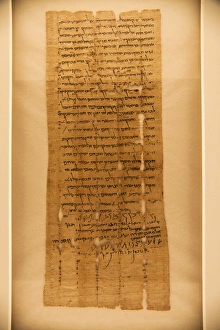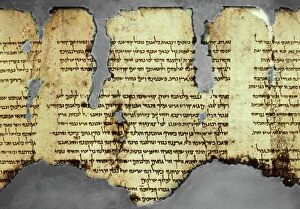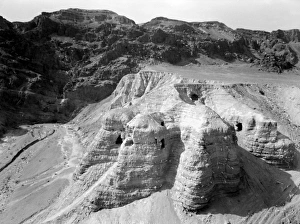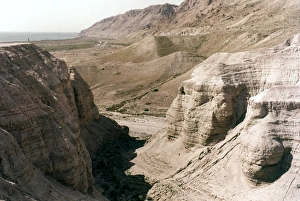Dead Sea Scroll Collection
The Dead Sea Scrolls, discovered in the Qumran caves of the Holy Land
All Professionally Made to Order for Quick Shipping
The Dead Sea Scrolls, discovered in the Qumran caves of the Holy Land, are a fascinating collection of ancient texts that provide valuable insights into Jewish history and culture. Dating back to as early as the 1st century AD, these scrolls offer glimpses into various aspects of life during that time. One notable scroll is the original Dead Sea Scroll 5/6 Hev44 from 134 CE. This particular document is a deed with four signatures, shedding light on legal practices and land ownership in ancient times. Another fragment from the same era, C014/2074, offers a glimpse into religious beliefs and practices during this period. The War of the it also provides intriguing details about historical events and conflicts. It highlights how these scrolls were not only religious texts but also contained accounts of significant events happening around them. Qumran caves themselves hold immense historical significance. The exterior view from c1955 showcases their remote location near the Dead Sea while cave number 4's entrance gives us an idea of what it was like for those who sought refuge or stored precious documents within its depths. Amongst these treasures lies another fragment known as C014/2075 which adds to our understanding of daily life at that time. Additionally, Temple Scroll Fragment found in Cave no. 11 further enriches our knowledge by offering insights into religious rituals practiced centuries before Christ's birth. Visiting Qumran today allows tourists to experience firsthand where these incredible artifacts were discovered. The ruins of the ancient village give visitors a sense of what life might have been like for those who inhabited this area long ago. Each piece contributes to unraveling mysteries surrounding Jewish history and culture during different periods through fragments such as deeds, commentaries on biblical books like Habakkuk or even temple rituals documented in scrolls dating back thousands of years ago.













